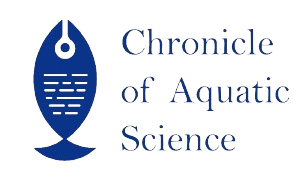| File | Action |
|---|---|
| Iqbal et al., 2023 | Download |
- 919088951040 call us
- chronicleofaquaticscience@gmail.com Mail us
CoAS_V1IS2_06
Mini-review
Genotoxicity Unveiled: A Minireview of Mechanisms, Detection, and Implications
Gowhar Iqbal*, Shafiya Mushtaq, Ad Viral Kumar Ganpatbhai, Lukram Sushil Singh and Sangeetha S
Abstract
The term "genotoxicity" is defined as the presence of a substance that has a detrimental effect on the genetic material (DNA, RNA) of the cell, hence impairing the integrity of the cell. Mutagens called genotoxins can potentially damage DNA or chromosomal material, resulting in a mutation. Genotoxins are substances that can harm DNA or chromosomal structure, resulting in mutations. It can be radiation or chemicals. Regulatory agencies worldwide demand data on the new drug’s potential to cause genotoxicity as part of the safety evaluation process. While the damage to the germ cell will result in heritable disorders, the damage to the somatic cells will result in various diseases, including cancer. Regulatory agencies worldwide demand data on the new drug’s potential to cause genotoxicity as part of the safety evaluation process.
Keywords
Genotoxicity, DNA Damage, Genotoxins, Cancer, Genotoxicity Assay
References
De Flora S, Izzotti A (2007) Mutagenesis and cardiovascular diseases Molecular mechanisms, risk factors, and protective factors. Mutat Res 621(1-2): 5-17
Natarajan AT (1993) Mechanisms for induction of mutations and chromosome alterations. Environ Health Perspect 101 (Suppl 3): 225- 229.
Savage JR (1976) Classification and relationships of induced chromosomal structural changes. J Med Genet 13(2): 103-22.
Hayashi, Makoto. "The micronucleus test—most widely used in vivo genotoxicity test—." Genes and Environment 38.1 (2016): 18.
Eker AP, Quayle C, Chaves I, van der Horst GT (2009) DNA repair in Mammalia cells: Direct DNA damage reversal: elegant solutions for nasty problems. Cell Mol Life Sci 66(6): 968-80.
Sedgwick B, Bates PA, Paik J, Jacobs SC, Lindahl T (2007) Repair of alkylated DNA: recent advances. DNA Repair (Amst) 6(4): 429-442.
Cimino MC (2006) Comparative overview of current international strategies and guidelines for genetic toxicology testing for regulatory purposes. Environ Mol Mutagen 47(5): 362-390.
Shah SU (2012) Importance of genotoxicity & S2a guidelines for genotoxicity testing for pharmaceuticals. Iosr Journal of Pharmacy and Biological Sciences 1(2): 43-54.
Phillips, D.H. and Arlt, V.M., 2009. Genotoxicity: damage to DNA and its consequences. Molecular, Clinical and Environmental Toxicology: Volume 1: Molecular Toxicology,.87-110.
Blattner, Georges, et al. "Gene editing and genotoxicity: targeting the off targets." Frontiers in Genome Editing 2 (2020): 613252.
Frenzilli, G. I. A. D. A., M. A. R. C. O. Nigro, and B. P. Lyons. "The Comet assay for the evaluation of genotoxic impact in aquatic environments." Mutation research/reviews in mutation research 681.1 (2009): 80-92.
Glei, M., T. Schneider, and W. Schlörmann. "Comet assay: an essential tool in toxicological research." Archives of toxicology 90 (2016): 2315-2336.
Vandghanooni, Somayeh, and Morteza Eskandani. "Comet assay: a method to evaluate the genotoxicity of nano-drug delivery system." BioImpacts: BI 1.2 (2011): 87.
Phillips, David H., and Volker M. Arlt. "Genotoxicity: damage to DNA and its consequences." Molecular, Clinical and Environmental Toxicology: Volume 1: Molecular Toxicology (2009): 87-110.
- Published online
- 31st July, 2023
How to Cite the Article
Iqbal et al., (2023) Genotoxicity Unveiled: A Minireview of Mechanisms, Detection, and Implications. Chronicle of Aquatic Science 1(2): 44-50
Copyright
This is an open-access article distributed under the terms of the Creative Commons Attribution License (CC BY). The use, distribution or reproduction in other forums is permitted, provided the original author(s) and the copyright owner(s) are credited and that the original publication in this journal is cited, in accordance with accepted academic practice. No use, distribution or reproduction is permitted which does not comply with these terms.

Iqbal et al., 2023


